© 2023 Dr Margaret Sheppard
Market Trading
Although supermarkets were beginning to be opened and were a common sight in Colombo and other larger towns, buying at the local markets was still very common up to 2015. A visit to the local market was not only to shop for food and a whole range of household goods and foods, but was a social occasion to meet up with friends and relatives and exchange gossip. The local small shops and cafes, typical of Sri Lankan small towns greatly benefited from custom on market days.
Ambalantota Market is fairly typical and offers a huge range of stalls. The day before, vegetable and fruit producers attend with their goods and the market traders buy them wholesale for their stalls. They set up their stalls from early in the morning of market day, laying out their goods that they shade from the hot sun or rain with tarpaulins. They pay a daily fee for their position to the market administrator who visits each stall in turn to collect the market fees (typically when the market is underway so that they have cash to pay the fee.)
The bigger traders go from market to market to sell on the different days the markets are held.
(The photographs are from markets days at Amabalntota and Dikwella Markets.)
You Tube Video Link:
“Fresh local food from Dickwella Market for Premlanka Hotel, Sri Lanka”
https://youtu.be/Wn9vb-
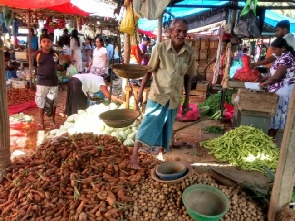
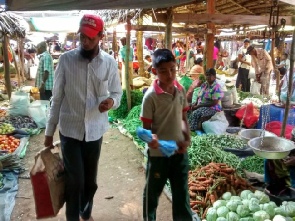
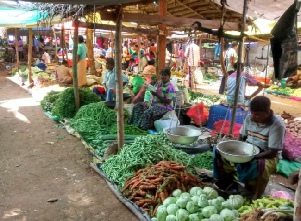
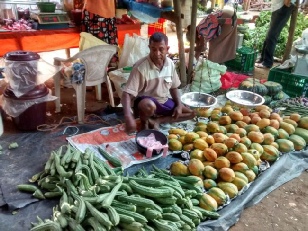
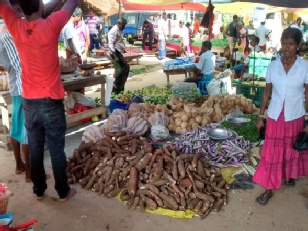

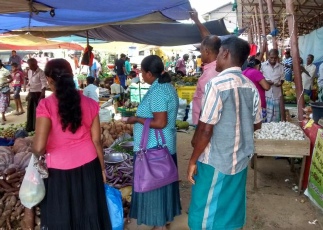
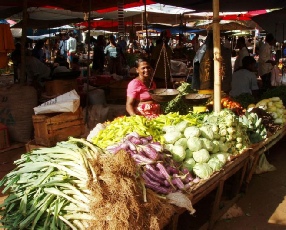
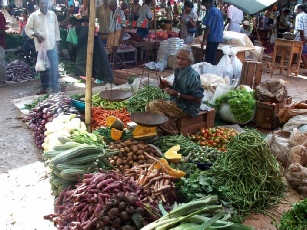
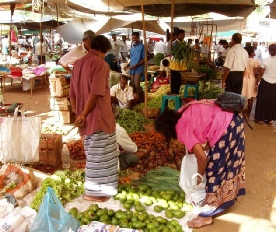
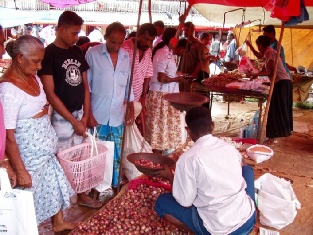
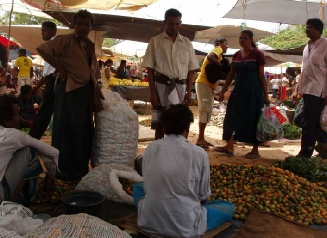
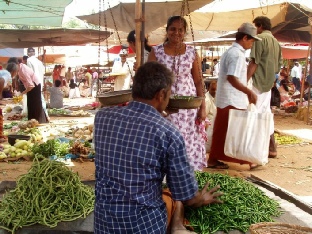


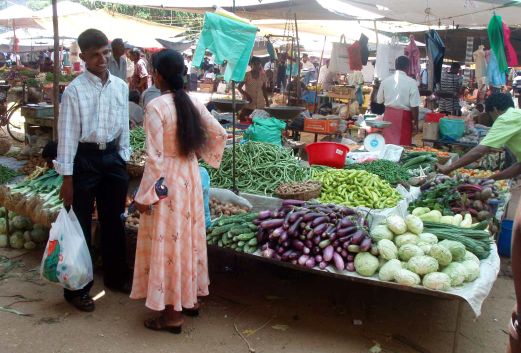

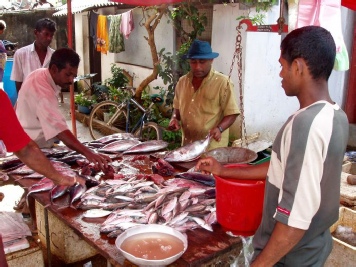
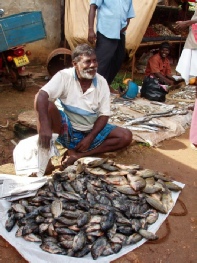
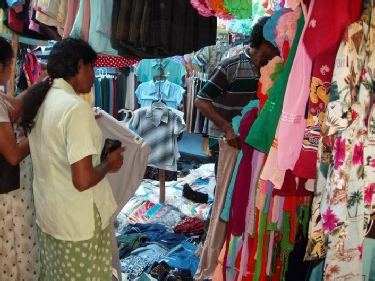
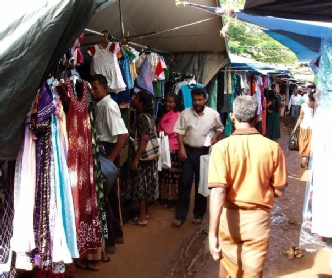
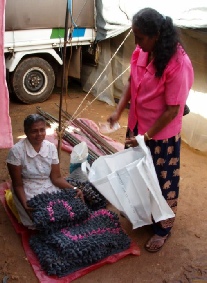



Keeping the takings safe!
The fish traders usually have a separated area from the rest of the stalls. At Dikwella their spot is on the edge of the market near the sea so the cooling sea breezes help to keep the fish fresh. The traders cut off chunks of larger fish to sell by weight to the customers. Any unsold fish when the market finishes can be sold to be dried.
This section of the market sells textiles -
Smaller traders who do not own scales display their goods in
separate mounds



Typical market scales. The woman calls out the prices
Pineapples priced according to size